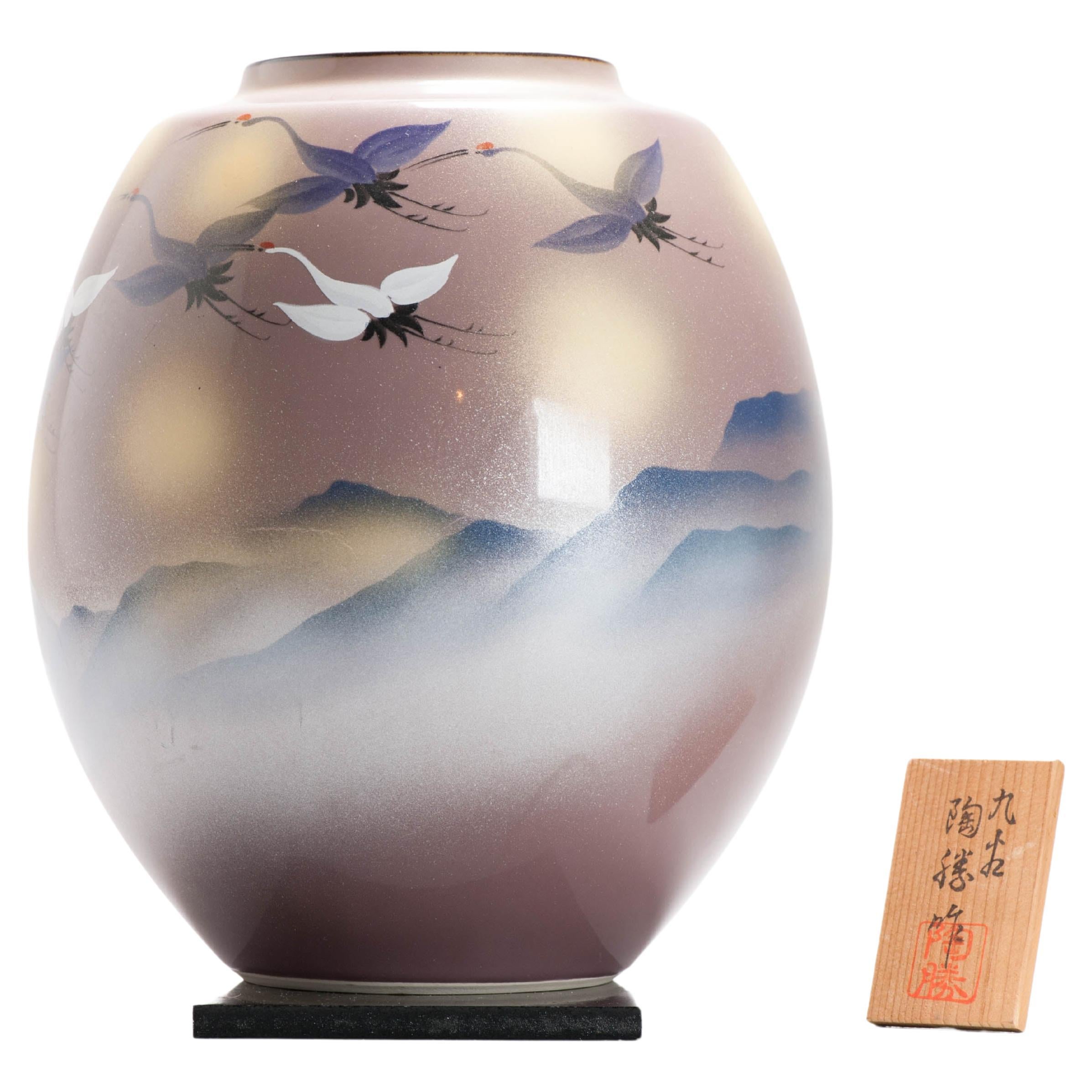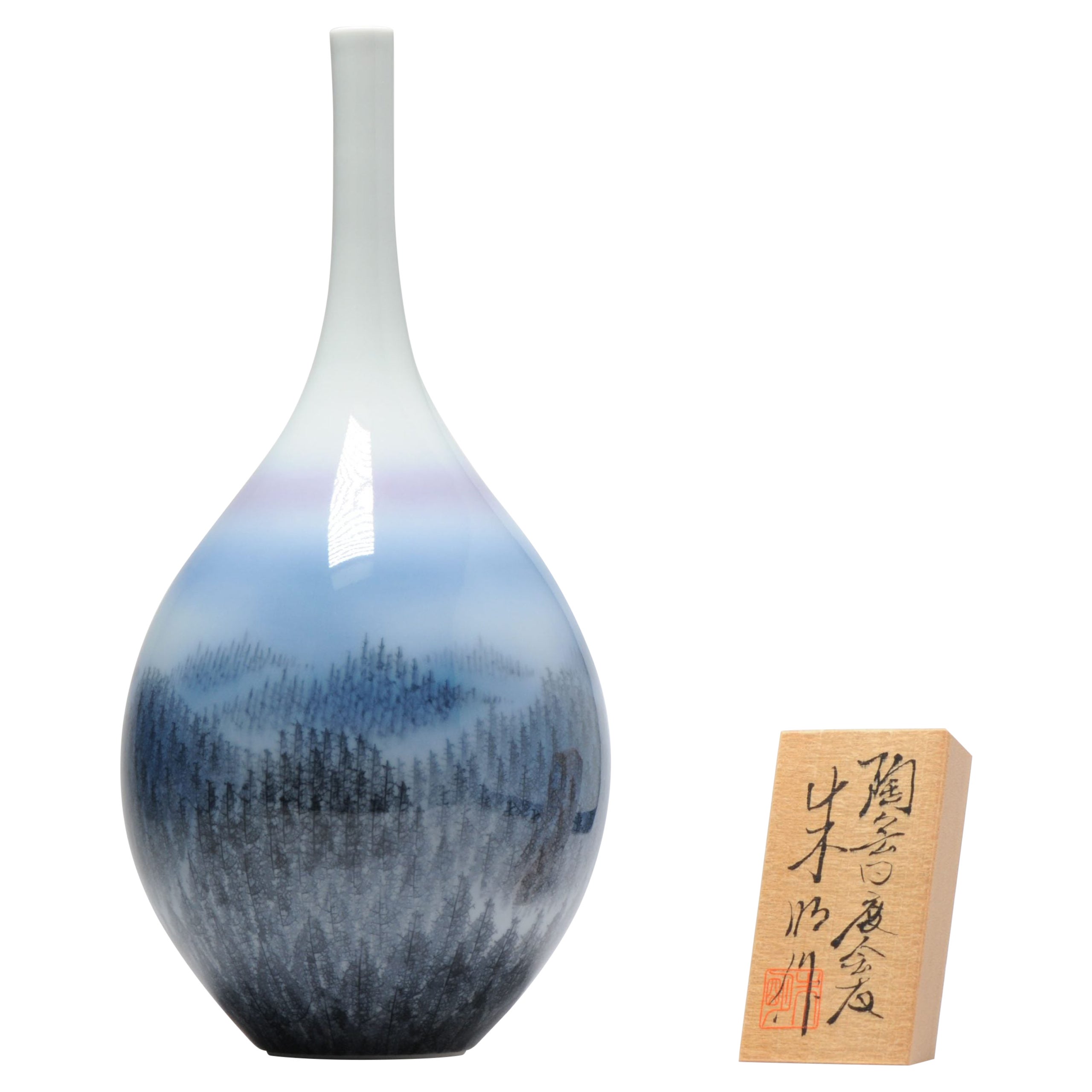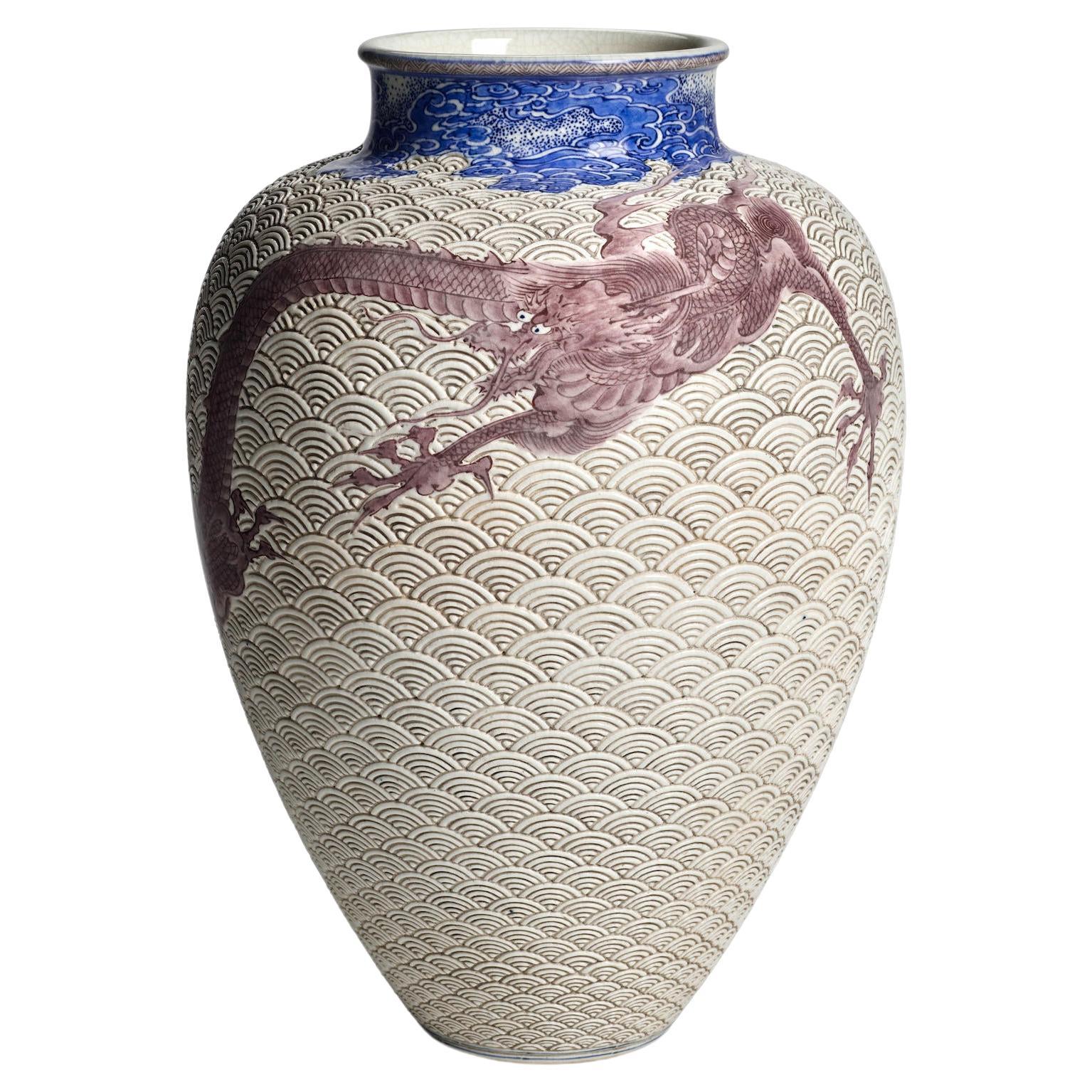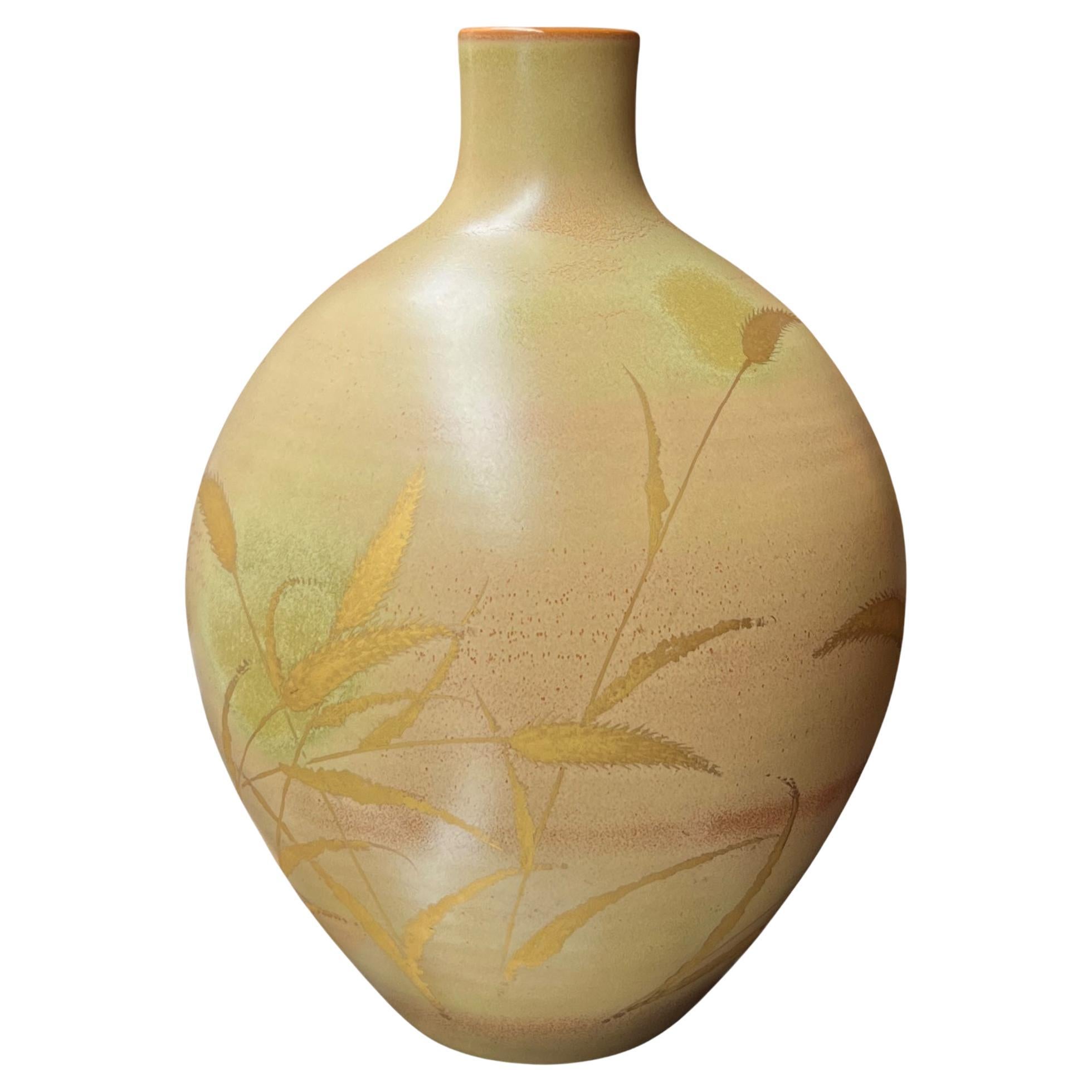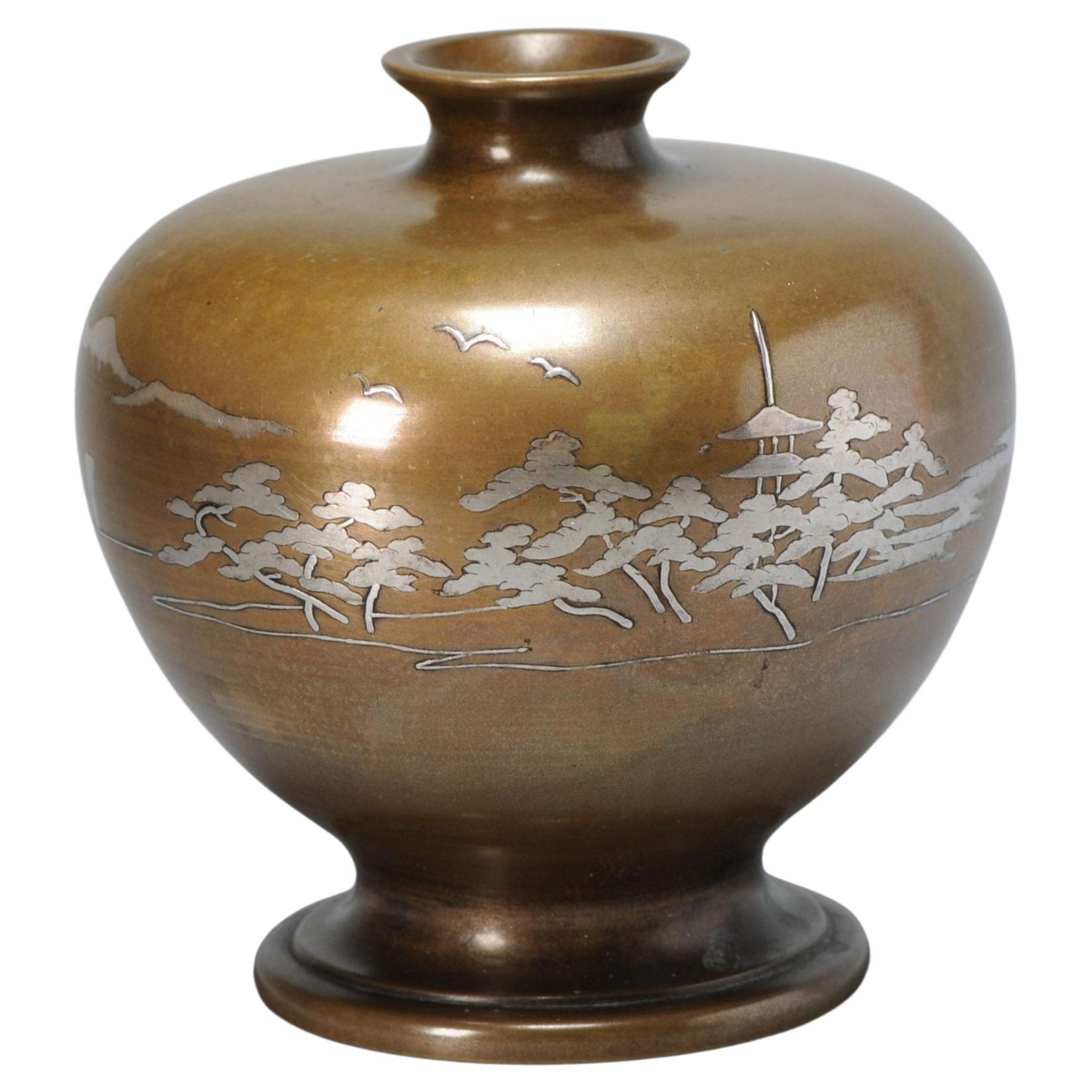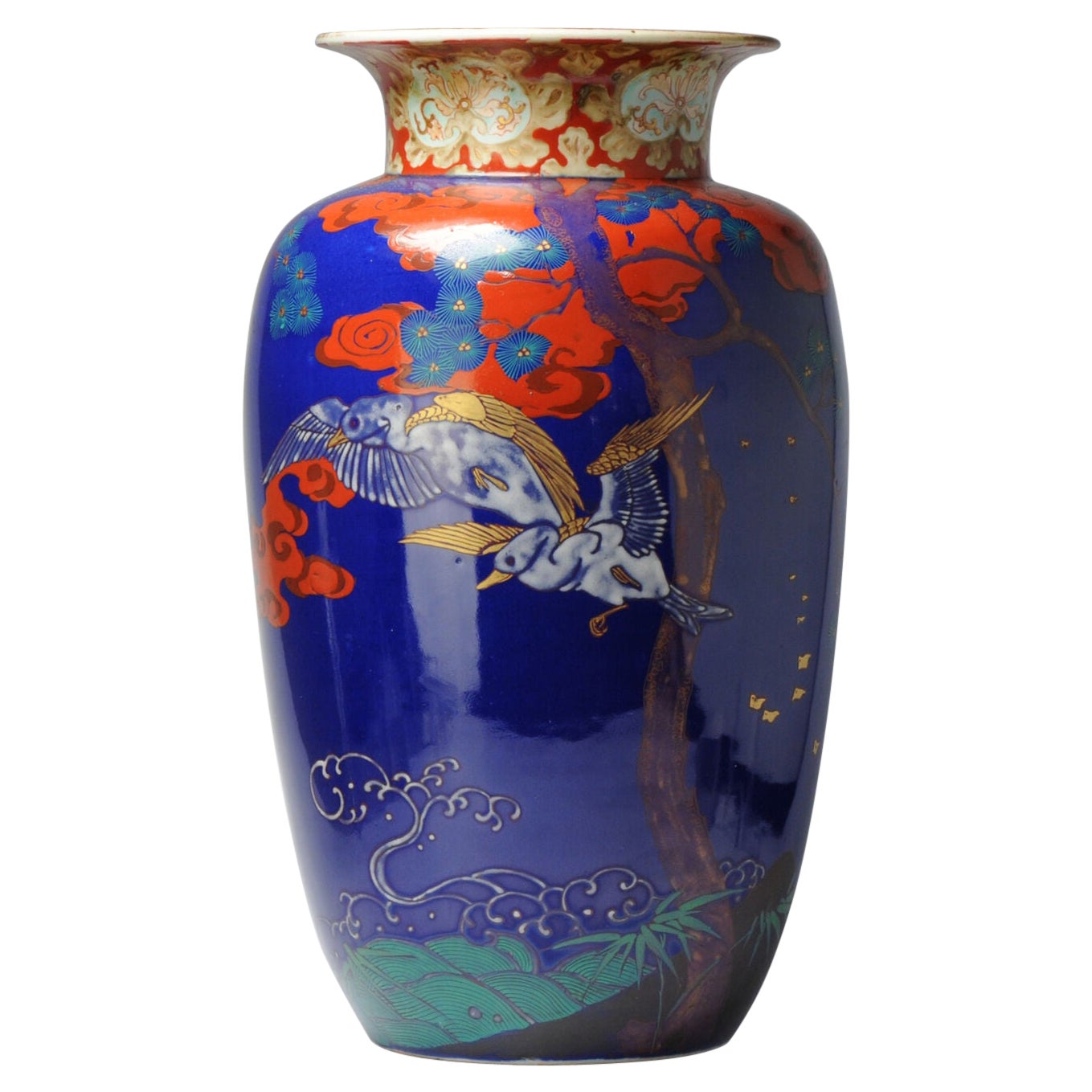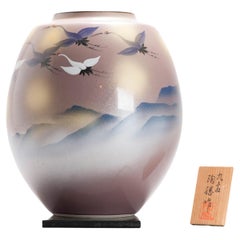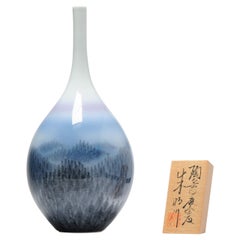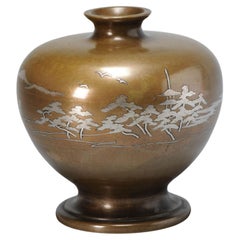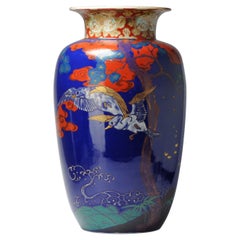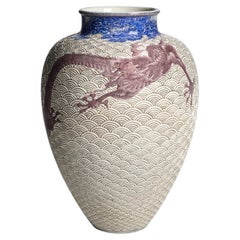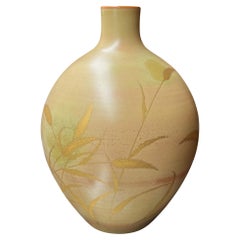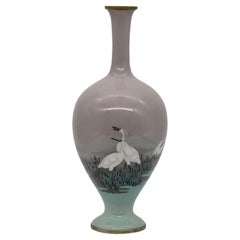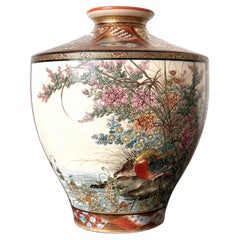Items Similar to Japanese Vase Arita by Kutani, Crane Flying, 20th Century
Want more images or videos?
Request additional images or videos from the seller
1 of 5
Japanese Vase Arita by Kutani, Crane Flying, 20th Century
$1,512.37
$1,890.4620% Off
£1,119.68
£1,399.6120% Off
€1,256.80
€1,57120% Off
CA$2,093.98
CA$2,617.4720% Off
A$2,286.12
A$2,857.6520% Off
CHF 1,198.52
CHF 1,498.1520% Off
MX$27,765.83
MX$34,707.2820% Off
NOK 14,967.56
NOK 18,709.4520% Off
SEK 14,133.37
SEK 17,666.7120% Off
DKK 9,568.29
DKK 11,960.3620% Off
About the Item
Lovely and unusual piece.
A superb blue and white porcelain vase, with a landscape. Made by Fuji Shumei
Fujii Mr. Aki Fujii’s specialty is the technique of drawing a mountain by simulating the veins of a leaf, called the “leaf technique”, as if it were a complex tree branch.
When young leaves such as magnolia are pressed against unglazed pottery like Japanese paper dyeing and bleeding Kuresu, the veins of the leaves emerge as dark lines, and the mountains are drawn by arranging them.
This technique is used to capture the characteristics of the season, and the Arita landscape itself, which I imagined in my mind, is depicted in the work.
Mr. Akiaki Fujii has won many prizes including the Japan Ceramic Art Exhibition and the Kyushu Yamaguchi Ceramics Exhibition Minister of Education Award.
A pot with dyeing the towering mountains was painted in front of me. If you look closely with your face close, you can see that even the branches of the tree are growing densely. The distant mountains are pale and small. On the other hand, the nearby mountains are drawn thick and large, and I realize that each tree is in the shape of a leaf. Dr. Aki Fujii is synonymous with this “tree leaf technique,” which draws a mountain with veins resembling complex tree branches.
When young leaves such as magnolia are pressed against unglazed pottery like Japanese paper dyeing to let gosu bleed, the veins emerge as dark lines, and mountains are formed by lining them up. Mr. Fujii explains, “The mountain is the best way to make the best use of the shape of the leaves. What I draw is the Arita landscape itself that I imagined in my mind.” The origin of this style was the leaf of a single tree, which was found only during the walk.
Mr. Fujii, who is also familiar with the bones, said, “In the Meiji era, roasted plates made of wax were made, but these are so-called handmade products. Spare no effort It is said that it takes one to two days to draw a mountain on one vessel.
The Fujii family is a family lineage that has been involved in pottery for generations, such as being allowed to use the family name sword as a pottery kiln during the Edo period. Mr. Fujii’s pottery career begins with a 15-year-old painting apprentice. In his twenties, while working for a local ceramics manufacturer, he challenged to exhibit at Nikko. He became independent as a painting craftsman the year after he won the first prize, and opened the kiln 10 years later.
During this time, he has been working on various techniques, including the “cotton thread technique,” which involves spraying soil that has been melted with water onto unglazed wrapping yarn to remove the thread and create a three-dimensional effect. At the time of the boom in Komari, there were times when products that could sell were made more and more, which strengthened the idea that “business and art are different things”. I still have the anxiety that “good-looking products sell well, and really good works don’t sell well. That’s a pain.”
After receiving the Prefecture Art and Cultural Achievement Award six years ago, Mr. Fujii has refrained from exhibiting activities such as exhibitions and solo exhibitions at pottery exhibitions for health reasons. On behalf of them, the eldest son, Tsuyoshi (31), is developing an active creative activity using blue-white porcelain. He looks to his successor, who pursues his way with a style different from his father’s.
Mr. Fujii himself said, “I think I can make another expression with Konoha technique. I want to open a hole in Arita who is somehow stuck”, and he is eager to go outside again.
Additional information:
Material: Porcelain & Pottery
Region of Origin: Japan
Period: 20th century
Japanese Style: Arita
Decoration Type / Colour: Blue & White
Japan Dynasty Period: Showa Period (1926-1989)
Condition: Perfect
Dimensions: 27 x 20 cm
- Creator:Fujii Shumei (Artist)
- Dimensions:Height: 7.88 in (20 cm)Diameter: 10.63 in (27 cm)
- Style:Showa (Of the Period)
- Materials and Techniques:
- Place of Origin:
- Period:
- Date of Manufacture:20th Century
- Condition:
- Seller Location:Amsterdam, NL
- Reference Number:Seller: 1457738063781stDibs: LU4863242698082
About the Seller
5.0
Gold Seller
Premium sellers maintaining a 4.3+ rating and 24-hour response times
Established in 2015
1stDibs seller since 2019
269 sales on 1stDibs
Typical response time: 8 hours
- ShippingRetrieving quote...Shipping from: Amsterdam, Netherlands
- Return Policy
Authenticity Guarantee
In the unlikely event there’s an issue with an item’s authenticity, contact us within 1 year for a full refund. DetailsMoney-Back Guarantee
If your item is not as described, is damaged in transit, or does not arrive, contact us within 7 days for a full refund. Details24-Hour Cancellation
You have a 24-hour grace period in which to reconsider your purchase, with no questions asked.Vetted Professional Sellers
Our world-class sellers must adhere to strict standards for service and quality, maintaining the integrity of our listings.Price-Match Guarantee
If you find that a seller listed the same item for a lower price elsewhere, we’ll match it.Trusted Global Delivery
Our best-in-class carrier network provides specialized shipping options worldwide, including custom delivery.More From This Seller
View AllFine Art Japanese Kutani Crane Vase Arita by Artist
By Fujii Shumei
Located in Amsterdam, Noord Holland
Lovely and rare piece.
A superb blue and white porcelain vase, with a winter landscape. Made by Fuji Shumei
Fujii Mr. Aki Fujii's specialty is the technique of drawing a mountain b...
Category
20th Century Japanese Vases
Materials
Bronze
$3,156 Sale Price
20% Off
Fine Art Japanese Vase Arita by Fujii Shumei Winter Landscape
By Fujii Shumei
Located in Amsterdam, Noord Holland
Lovely and rare piece with storage box.
A superb blue and white porcelain vase, with a winter landscape. Made by Fuji Shumei
Fujii Mr. Aki Fujii's specialty is the technique of dra...
Category
20th Century Japanese Vases
Materials
Bronze
Shibuichi Vase in Lovely Shape, Landscape, Meiji (1868-1912) Era, Early 20th C
Located in Amsterdam, Noord Holland
Japan, silver inlaid bronze vase, Meiji period (1868-1912), the bulbous vase inlaid with a temple in a landscape,
Additional information:
Material: Bronze & Cloisonne
Region of Orig...
Category
Early 20th Century Japanese Vases
Materials
Bronze
$1,830 Sale Price
20% Off
Rare Japanese Porcelain Antique Vase Marked Hichozan, 19th Century
Located in Amsterdam, Noord Holland
A beautiful and unsual Japanese Porcelain vase, decorated with flying ducks in a landscape on blue ground, floral decorative band at the top, marked with a nine character mark on the...
Category
Antique 19th Century Japanese Vases
Materials
Porcelain
$6,878 Sale Price
20% Off
Japanese Arita Vase Winter Landscape by Artist Fujii Shumei, 20th Century
By Fujii Shumei
Located in Amsterdam, Noord Holland
Lovely and rare piece with storage box.
A superb blue and white porcelain vase, with a winter landscape. Made by Fuji Shumei
Fujii Mr. Aki Fujii’s specialty is the technique of dra...
Category
20th Century Japanese Showa Vases
Materials
Bronze
Fine Art Japanese Vase Arita by Fujii Shumei Winter Landscape, 20th Century
By Fujii Shumei
Located in Amsterdam, Noord Holland
Lovely and rare piece with matching storage box.
A superb blue and white porcelain vase. It has a leaf pattern on both front and back. Signed Shumei to base.
Fujii Mr. Aki Fujii's ...
Category
20th Century Japanese Decorative Bowls
Materials
Bronze
$2,203 Sale Price
20% Off
You May Also Like
Large Japanese Ceramic Vase by Makuzu Kozan Meiji Period
By Makuzu Kozan
Located in Atlanta, GA
A large Japanese ceramic vase by the celebrated Meiji imperial potter Makuzu Kozan (1842-1916) circa 1880-1890s. Dated to his underglaze phase post 1887 after he successfully mastered the new colors available from the west and used them to the best advantage in his work deeply rooted in Japanese aesthetics. The vase has an impressive size and was potted in the classic baluster form with an elegant proportion. The surface is decorated using a combination of techniques of low relief sculpturing...
Category
Antique Late 19th Century Japanese Meiji Ceramics
Materials
Ceramic
Japan, Porcelain vase by Inoue Haruo 1910- 1975
Located in PARIS, FR
This porcelain vase, created by Inoue Haruo, embodies the elegance and finesse of Kyoto ceramics. Its spherical shape softened by harmonious curves, is topped with a slightly flared ...
Category
Mid-20th Century Japanese Vases
Materials
Porcelain
Fine Japanese Cloisonné-enamel and Musen Vase Attributed to Namikawa Sosuke
Located in London, GB
A magnificent Cloisonné-enamel and Musen Baluster vase attributed to Namikawa Sosuke.
Meiji era (1868-1912), late 19th century.
This vase features an elegant classic form with a sle...
Category
Antique Late 19th Century Japanese Metalwork
Materials
Enamel
Fine Japanese Satsuma Vase by Ryozan Okamoto for Yasuda Company Meiji Period
Located in Atlanta, GA
A finely decorated Japanese satsuma ceramic vase by Ryozan Okamoto (c.1820s-1910s) for Yasuda. Ryozan is the head artist working for Yasuda company, a Japanese ceramic makers and dea...
Category
Antique Early 1900s Japanese Meiji Ceramics
Materials
Ceramic
Aritaware Porcelain Vase, Fukagawa, Japan, 20th Century
By Fukagawa
Located in Chappaqua, NY
Aritaware porcelain vase, Fukagawa, Japan, 20th century. Octagonal shaped vase. Graphic wrapped tassel design in gold and deep red on white ground.
Category
Late 20th Century Japanese Japonisme Porcelain
Materials
Porcelain
Antique Meiji Japanese Cloisonne Enamel Vase with Flying Cranes Hayashi School
Located in Long Island City, NY
Antique Meiji Japanese Cloisonne Enamel Vase with Flying Cranes Hayashi School
An antique Japanese, late Meiji period, enamel . The vase has a sphere shaped body and a wide fluted n...
Category
Antique Late 19th Century Japanese Meiji Vases
Materials
Enamel, Brass
More Ways To Browse
Flying Cranes
Porcelain Crane
C Trumpet Used
Charles Brown Pottery
Chinese Red Jars
Chinese White Pottery
Cloisonne Fish
Cobalt Blue Cut Vase
Collection Rimini Blu
Crystal Vase By Baccarat
Czechoslovakia Vases Antique
Designs West Pottery
Dinanderie Vases
Enrico Potz
Eugene Cornu
Fat Lava Purple
Floral Etched Vase
Glass Egg Vase
